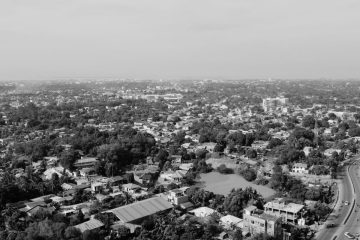What Happened On January 17th?
Unfortunately for Japan, as beautiful it is, four of the Earth’s tectonic plates meet in the country, leaving Japan as a vulnerable for earthquakes, tsunamis, and natural disasters.
The early dawn of January 17, 1995, arrived in Kobe, Japan. But at 5:46 am, everything changed with a horrifying crescendo. The ground lurched, buildings swayed, and screams ripped through the air as the Great Hanshin earthquake (measuring 6.9 on the Richter scale) slammed into the region.
For 20 agonizing seconds, the earth convulsed. Concrete giants crumbled, highways buckled, and fires erupted across the cityscape. The bustling waterfront, once alive with the comings and goings of trade, became a tangled graveyard of ships and debris.
Kobe, the closest major city to the epicenter, bore the brunt of the devastation. Entire neighborhoods were reduced to rubble, streets transformed into treacherous obstacle courses, and the air thick with the acrid tang of smoke and dust.
In the immediate aftermath, chaos reigned. Phone lines were down, roads blocked, and emergency services overwhelmed. Yet, from the ruins, stories of extraordinary heroism emerged.
Ordinary citizens transformed into first responders, pulling survivors from beneath collapsed buildings, sharing meager supplies, and guiding the injured to makeshift medical centers. The spirit of “ganbatte,” meaning “never give up,” became a rallying cry, uniting a city fractured by trauma.
The days that followed were a blur of grief, exhaustion, and the relentless grind of rescue and recovery. The death toll climbed relentlessly, reaching an estimated 6,434 claimed lives, leaving over 30,000 injured and over 45,000 homeless. The world watched in horror, offering aid and support as Kobe grappled with the immensity of the tragedy.
But Kobe refused to be defined by its wounds. The city, drawing strength from its deep-rooted resilience and the outpouring of global empathy, immediately started its reconstruction phase. Buildings rose from the ashes, stronger and more earthquake-resistant. Communities rebuilt not just infrastructure, but also the bonds of trust and solidarity that had been shaken but not broken.
Questions, Comments, Concerns?
The resilience of the people of Japan along with international support is what allowed the city and its civilians to recover.
Now, the city is up and running again, but the lives that were lost will never be forgotten.
If you have any thoughts or questions, please share them with me in the comment section below.





